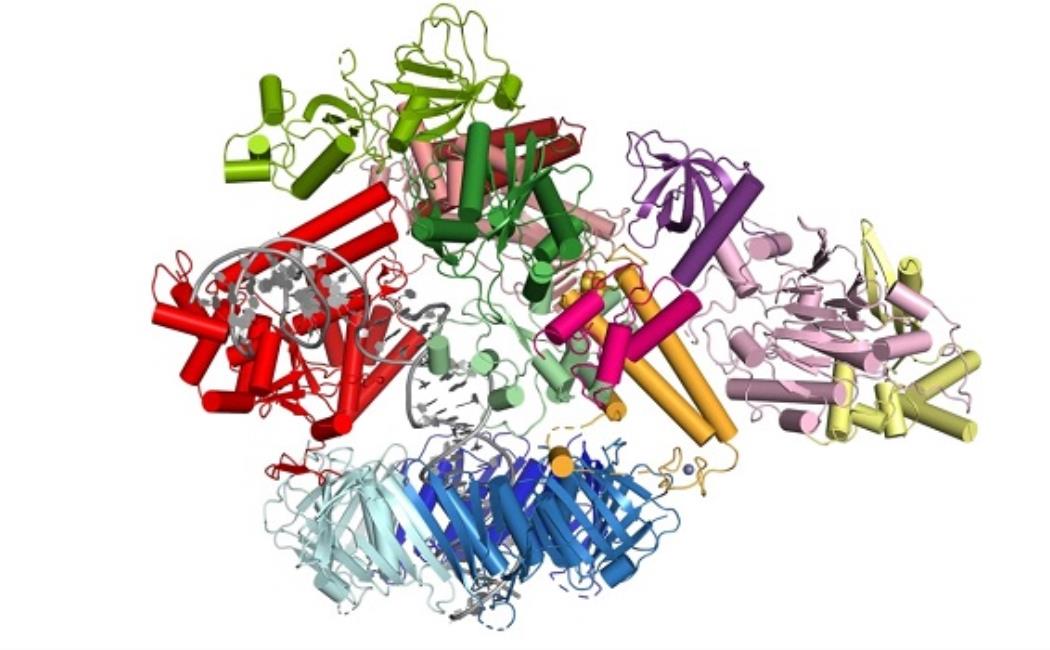
Stitching together the structure of the DNA replication toolbelt
17 May, 2020
The molecular machinery responsible for replicating human DNA has come into sharper focus and deepened understanding of this fundamental biological process and how it can malfunction. An international team led by researchers at KAUST has used cryo-electron micrography to study the structure of the human Pol δ-DNA-PCNA complex.
During replication, the two strands in the DNA helix are unwound, and each serves as the template for a new copy. Pol δ is one of the enzymes responsible for copying one of the strands. It is tethered to the DNA by a molecule known as PCNA, forming a Pol δ-DNA-PCNA complex at the heart of replication.
Click here to read the full story
Image: The research team has proposed a "toolbelt" model for Pol δ, which improves understanding of the dynamics of DNA replication.
Reproduced with permission from reference 1 © 2020 Springer Nature